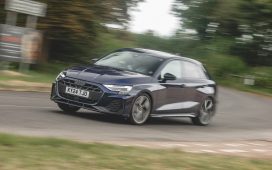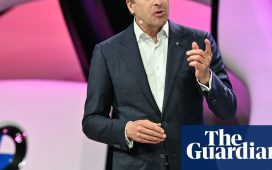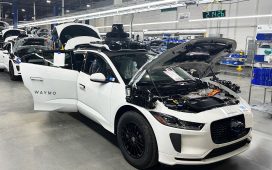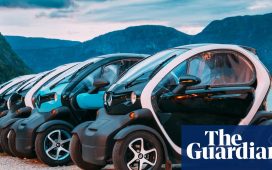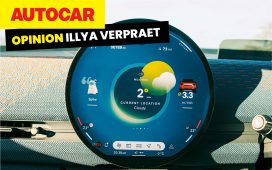There is an old joke that asks “When is a door not a door?” The answer is, “When it is ajar.” Today, there is a new version that goes like this. When are welding machines not welding machines? The answer is, “When they are EV chargers.” Lincoln Electric is well known to tradespeople. The company manufactures welding equipment of all types and has been in business since 1895.
Lincoln Electric has just introduced its Velion line of DC fast EV chargers for electric vehicles. EV charging is much in the news lately but mostly for all the wrong reasons. Leaving aside the Tesla Supercharger network, many of the fast EV chargers available to the public in North America are broken or will not connect when needed. The Lincoln Electric Velion Level 3 DC fast charger platform delivers fast charging speeds with unparalleled reliability for the ultimate in performance and uptime, the company says in a press release.
That’s because the Velion EV chargers are designed with industrial grade components that leverage the company’s more than a century of experience designing, testing, and building high quality industrial equipment that has stood the test of time, including 50+ years of experience manufacturing rugged, reliable electric power conversion systems for a wide range of harsh outdoor operating environments.
The Velion lineup is “designed to meet the stringent needs of charge point operators who install, operate and manage networks of charging stations as well as businesses with EV fleets requiring reliable, fast charging,” said Steven Sumner, the head of corporate innovation for Lincoln Electric. “Our DCFC charger is also the first and only American designed and American made EV charger to not only meet, but exceed, the requirements of the federal government’s National Electric Vehicle Infrastructure Formula Program.”
The first charger from the company will be the 150 kW Velion DC fast charger, which exceeds 75% domestic content and is engineered to exceed 97% uptime with an output of up to 1000V/150A and 500V/300A and a charging efficiency of 95 percent. It operates within the temperature range of -31° F to 122° F (-35° C to 50° C), delivering reliable performance in a wide range of operating conditions. It is backed by Lincoln Electric’s multi-point service network across the United States. Here are some specs on the Velion EV chargers:
- Charging Type – DC Fast Charging
- DC Output Voltage – 200-1000V DC
- DC Output Current – Up to 150A
- DC Output Power – Up to 150kW
- Input Voltage – 460VAC +/- 10% (60Hz), 3-Phase, Protective Earth (UL Model)
Lincoln Electric Is Vertically Integrated
Customers who choose the Velion™ DCFC charger will benefit from Lincoln Electric’s vertically integrated manufacturing of tens of thousands of inverter systems per year, complete customization of a pedestal design that is suitable for dual branding or custom designs, a service network of factory trained repair technicians at locations across the United States, and scalable production capacity able to meet the needs of the expanding US market for EV chargers.
That part about being rugged enough to stand up to sub-zero and boiling hot temperatures is a biggie. Steve Sumner tells Canary Media other EV chargers “were born out of designs and manufacturing strategies that were more appropriate for lab-grade equipment — something that would see its whole life inside in perfect conditions.” But in the real world, rain, snow, cold temperatures, hot temperatures, wind, dust and other factors can mess with electronics.
“What Lincoln Electric is really known for, besides being a very good power conversion company, is making devices that last and live their whole lives outside.” He noted the company’s industrial products have been used on ships, in deserts, and even in Antarctica. The entire Velion line EV chargers is “purpose-built for ruggedness in the field,” he says.
The Challenge Of Making EV Chargers
It all started almost two years ago when a group of senior engineers walked into the office of Chris Mapes, the CEO of Lincoln Electric. They explained the similarities between direct current electric vehicle chargers and the plasma and electronics equipment the company has long manufactured. “We think we can make these,” they said.
“If you open up a welding machine or a plasma cutting machine, you would see power electronics,” Mapes explained. Inside, software engineering works with printed circuit boards to manage power, which is similar to what happens in a DC fast charger. The company already had its own manufacturing facility for printed circuit boards. The innovation challenge was developing software to allow a charger to interface with any electric vehicle.
When people plug in a vehicle, the charger and car or truck go through a series of electronic messages and “handshakes” that share information about the car and the charger, as well as details about how much electricity is needed. Then there are protocols and feedback for a pre-charge test, after which, if everything goes as planned, the actual charging process gets underway. This is why it is okay to plug in when it is raining. No electricity flows to the charging plug until all the preliminary electronic communications have been completed successfully.
One reason for the reliability of Lincoln Electric products is that the company coats its printed circuit boards with clear plastic epoxy. Two circuit boards go together in a metal casing to make a 50 kW module. Three of those modules make up the heart of the Velion power tower, which typically sits near a grid connection. The relatively few electrical connections between the modules and other parts of the equipment also provide protection from the elements. “Because it’s so simple and clean in design, and well protected, that’s where we believe the inherent reliability comes from,” Sumner says.
EV Chargers And NEVI
As an established company that began in the United States, Lincoln Electric was already compliant with the Federal Highway Administration’s Buy America standards contained in the NEVI program, said Sheila Cockburn of the Department of Transportation’s Joint Office of Energy and Transportation. “They’re leveraging their current technology to enter a newer market,” Cockburn said. “And they’ve been smart in being able to see the vision of where things are going and being able to pivot to use what they have to supply the new market.”
This is exactly how companies can play a role in the clean energy economy, even if they aren’t currently part of the energy sector, said Rick Stockburger, CEO of Brite Energy Innovators in Warren, Ohio. His organization acts as a hub to provide business and technical expertise to entrepreneurs looking to serve the energy sector. “It’s exactly the type of leadership we need to see from all of our legacy manufacturers in developing new products.
“If you look at what came down in legislation from the past three years, we’re not leaving behind American manufacturing like we did with the solar tax credits in the Obama administration,” Stockburger said. “We put American made caveats in all of these bills. The one thing I’ll never underestimate is the power of American innovation,” Stockburger said. “There are just really, really smart people that look at the opportunity and…are interested in seizing it.”
The Takeaway
We wonder how these new chargers from Lincoln Electric might affect car dealers who are weeping into their balance sheets about the high cost of adding EV chargers to their facilities. The problem is so severe that nearly half of all Ford and Buick dealers are saying they would rather not sell electric cars at all if they are forced to comply with the manufacturer’s mandates.
So far, the Biden administration is getting exactly what it bargained for in the Bipartisan Infrastructure Act — innovative new American products from American companies made by American workers. No wonder the Trumpies are so mad! How dare America put people to work while making a living wage? Why, the whole idea is so…..splutter…..un-American!
Have a tip for CleanTechnica? Want to advertise? Want to suggest a guest for our CleanTech Talk podcast? Contact us here.
Our Latest EVObsession Video
I don’t like paywalls. You don’t like paywalls. Who likes paywalls? Here at CleanTechnica, we implemented a limited paywall for a while, but it always felt wrong — and it was always tough to decide what we should put behind there. In theory, your most exclusive and best content goes behind a paywall. But then fewer people read it!! So, we’ve decided to completely nix paywalls here at CleanTechnica. But…
CleanTechnica uses affiliate links. See our policy here.

